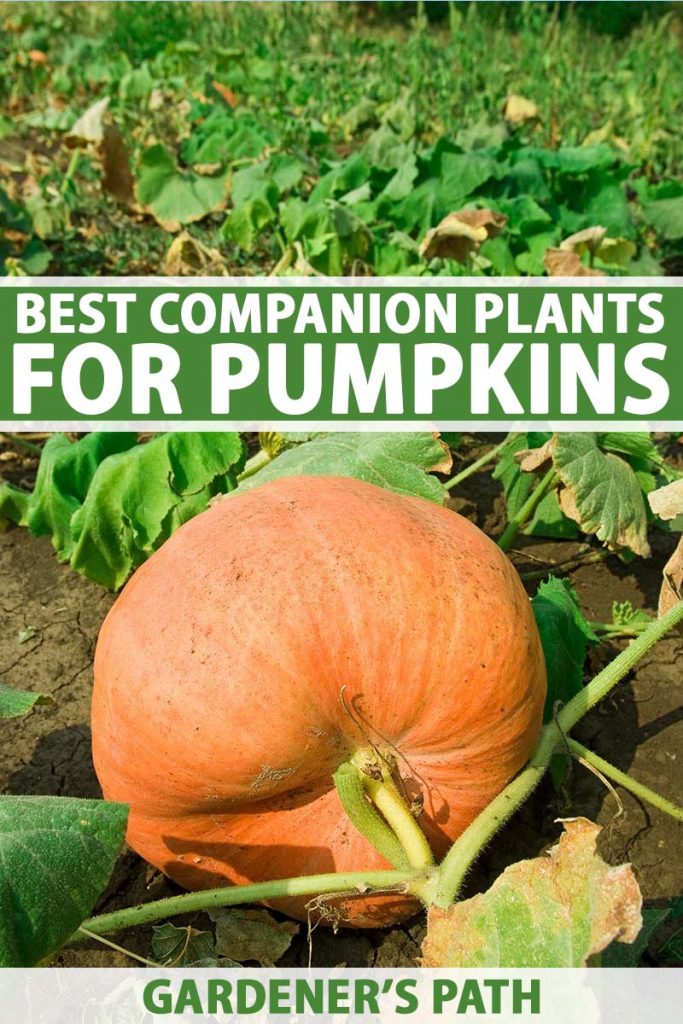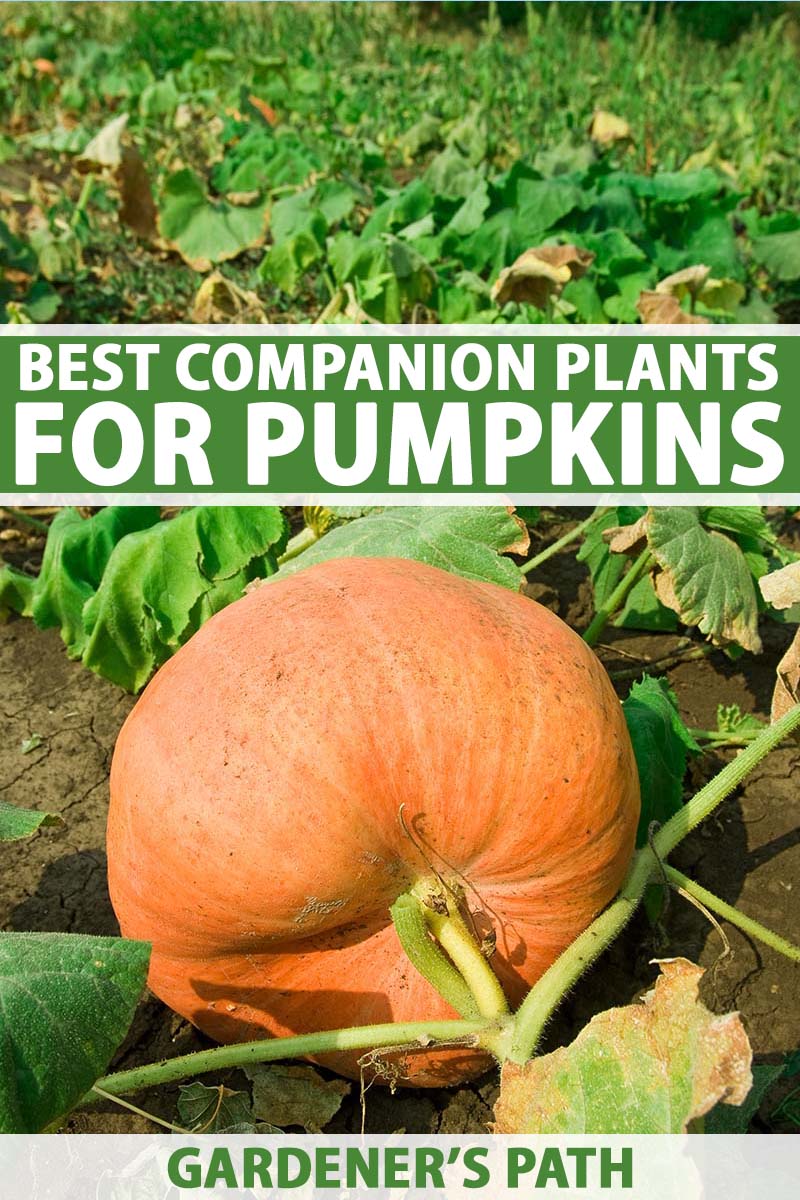Best Companion Plants For Pumpkins That Will Help You Grow A Bountiful Harvest
Introduction
Pumpkins are a fun and rewarding vegetable to grow, but they can be susceptible to pests and diseases. Companion planting is a great way to help protect your pumpkins from these problems and improve your chances of a bountiful harvest.
Companion planting is the practice of planting certain plants together in order to benefit each other. Some plants attract beneficial insects that help to control pests, while others provide shade or support, or help to improve the soil quality.
There are many different companion plants that can be beneficial for pumpkins. Some of the best include:
- Corn. Corn is a nitrogen-fixing plant, which means it can help to improve the nitrogen levels in the soil. This is beneficial for pumpkins, which are heavy feeders. Corn also provides a trellis for pumpkins to climb, which can help to prevent them from spreading out and taking up too much space.
- Beans. Beans are another nitrogen-fixing plant, and they also help to suppress weeds. They can be planted in between rows of pumpkins to help keep the garden tidy.
- Sunflowers. Sunflowers attract beneficial insects, such as ladybugs and parasitic wasps, which help to control pests. They also provide shade for pumpkins during hot weather.
- Marigolds. Marigolds have a strong scent that repels pests, such as squash bugs and beetles. They can be planted around the perimeter of your pumpkin patch to help keep these pests at bay.
- Nasturtiums. Nasturtiums also have a strong scent that repels pests. They can be planted among your pumpkins to help protect them from insects.
- Herbs. Many herbs, such as basil, oregano, and thyme, can help to repel pests and attract beneficial insects. They can be planted around the perimeter of your pumpkin patch or interplanted with your pumpkins.
Main Content
In addition to the companion plants listed above, there are a few other plants that you should avoid planting near pumpkins. These include:
- Potatoes. Potatoes and pumpkins are susceptible to the same diseases, so planting them together can increase the risk of both plants becoming infected.
- Brassicas. Brassicas, such as broccoli, cabbage, and kale, can attract pests that also target pumpkins. It is best to avoid planting these vegetables near your pumpkin patch.
Conclusion
By planting the right companion plants, you can help to protect your pumpkins from pests and diseases, improve your chances of a bountiful harvest, and make your garden more beautiful. So next time you're planting pumpkins, be sure to consider some of the companion plants listed above.
Are you looking to grow big, healthy pumpkins this year? If so, you'll want to make sure to plant them with the right companion plants. Some of the best companion plants for pumpkins include:
- Corn: Corn is a classic companion plant for pumpkins. The two plants complement each other well, as corn provides support for the pumpkin vines to climb, while the pumpkins help to shade the corn roots and keep them cool.
- Beans: Beans are another great companion plant for pumpkins. They help to fix nitrogen in the soil, which is essential for pumpkin growth. Beans also attract beneficial insects, such as ladybugs and parasitic wasps, which help to control pests.
- Marigolds: Marigolds are not only beautiful flowers, but they also help to repel pests, such as squash bugs and cucumber beetles. They also attract pollinators, which are essential for pumpkin pollination.
- Nasturtiums: Nasturtiums are another great insect-repelling plant. They also help to improve the drainage of the soil, which is important for pumpkins, as they do not like wet feet.
- Sunflowers: Sunflowers are tall plants that can help to provide shade for pumpkins. They also attract beneficial insects and help to improve the pollination of pumpkins.
If you're looking for more information about the best companion plants for pumpkins, I recommend visiting Gardenia Inspiration. This website has a wealth of information on companion planting, including a detailed list of the best plants to grow with pumpkins.
FAQ of best companion plants for pumpkins
- What are the best companion plants for pumpkins?
Some of the best companion plants for pumpkins include corn, pole beans, sunflowers, nasturtiums, marigolds, and borage. These plants have a number of benefits, including: * Attracting beneficial pollinators, such as bees and butterflies, which help to pollinate the pumpkin flowers and produce a better crop. * Repelling pest insects, such as squash bugs and cucumber beetles. * Providing natural weed suppression. * Improving the soil quality by adding nutrients and organic matter.
- Can pumpkins grow next to tomatoes?
Yes, pumpkins can grow next to tomatoes. In fact, they can complement each other quite well. Tomatoes are tall vining plants, while pumpkins are short and wide. This means that they can share the same space without competing for sunlight or nutrients. Additionally, tomatoes can help to deter pests that might otherwise attack pumpkins.
- What are some plants that should not be planted near pumpkins?
Some plants that should not be planted near pumpkins include potatoes, cabbage, kale, and broccoli. These plants are all susceptible to the same pests and diseases as pumpkins, so planting them together can increase the risk of infection. Additionally, potatoes and tomatoes can compete with pumpkins for nutrients, so it is best to plant them in separate areas of the garden.
- Where is the best place to plant pumpkin seedlings?
Pumpkin seedlings should be planted in a warm, sunny spot that has fertile, well-drained soil. The soil should have a pH of 6.0 to 6.8. Pumpkins need full sun, so they should be planted in an area that gets at least 6 hours of direct sunlight per day. The soil should also be well-drained, as pumpkins do not tolerate wet feet.
- How far apart should pumpkin plants be planted?
Pumpkin plants should be planted about 3 feet apart. This will give them enough space to grow and spread out. If you are planting multiple rows of pumpkins, make sure to leave at least 6 feet between rows.
Image of best companion plants for pumpkins
Here are 5 different images of best companion plants for pumpkins from Pinterest:
- Corn. Corn is a great companion plant for pumpkins because it provides support for the vines to climb. It also helps to attract pollinators, which are essential for pumpkins to produce fruit.

- Pole beans. Pole beans are another good companion plant for pumpkins. They help to improve the soil quality and provide nitrogen for the pumpkins. They also help to deter pests.

- Marigolds. Marigolds are known for their insect-repelling properties. They can help to keep pests away from pumpkins, such as squash bugs and cucumber beetles.

- Nasturtiums. Nasturtiums are another insect-repelling plant that can be planted near pumpkins. They also help to improve the soil quality and attract pollinators.

- Sunflowers. Sunflowers are tall plants that can provide shade for pumpkins. They also help to attract pollinators and deter pests.

Post a Comment for " Best Companion Plants For Pumpkins That Will Help You Grow A Bountiful Harvest"